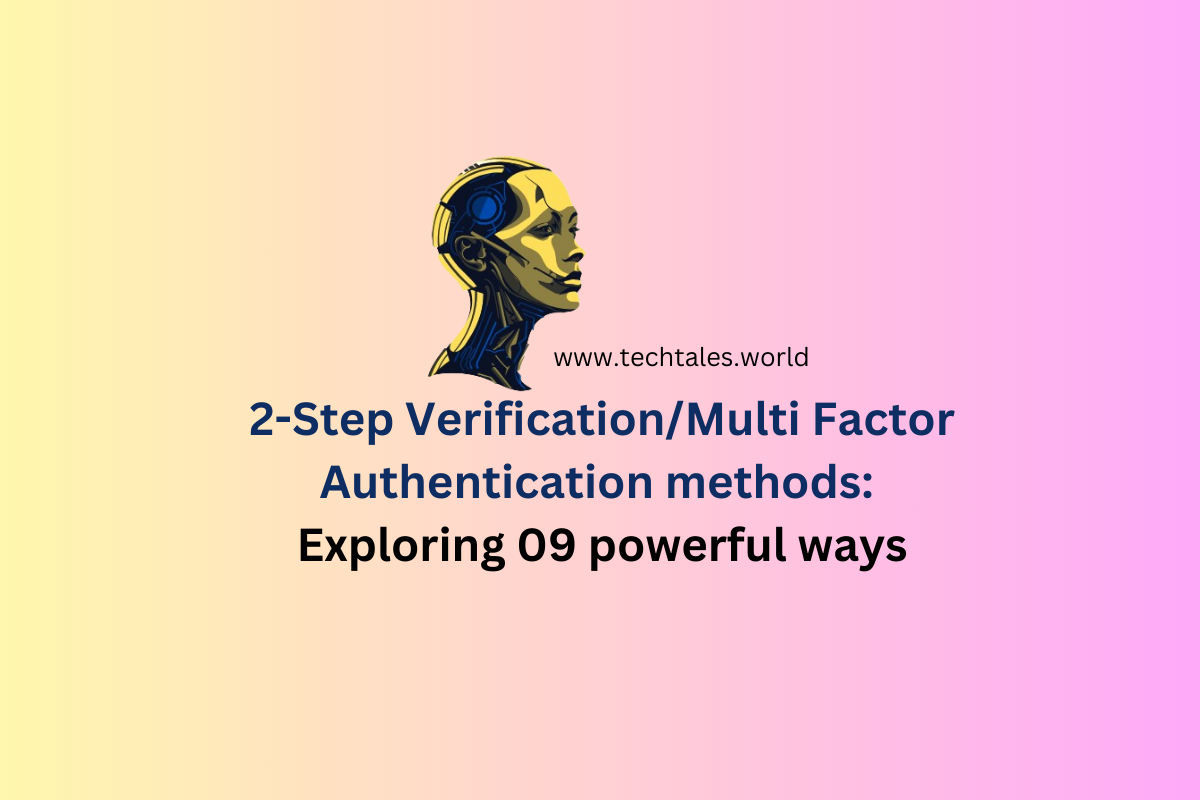Introduction
2 Step verification methods have become essential, as passwords alone are no longer enough to secure our online accounts in today’s digital world. With cyber threats constantly evolving, hackers have become more sophisticated in their attacks, making traditional password-only protection increasingly inadequate. Enter 2-step verification—a simple yet powerful solution to add an extra layer of security and safeguard personal and professional data.
What Is 2 Step Verification?
2 Step Verification (2SV) is a security method that requires users to provide two forms of identification before gaining access to an account or service. While the first factor is typically a password, the second factor could vary, providing an added level of complexity for anyone attempting to breach an account.
2SV serves as a security buffer that makes it exponentially harder for unauthorized users to access accounts, even if they manage to steal passwords.
Why 2 Step Verification Is Important in Today’s Digital Landscape
With the rise of digital transformation, our lives and personal information are more connected than ever. From online banking to social media, our accounts often contain sensitive data. Sadly, this has caused a rise in cyber attacks. Using 2-step verification mitigates the risks by adding an extra layer of security.
Types of 2 Step Verification
2-step verification methods vary widely, each offering unique strengths. Some prioritize ease of use, while others emphasize security. Let’s explore the main types and how they protect your data.
01. SMS-Based Verification
SMS-based verification is one of the most popular forms of 2-step verification. After entering a password, the user receives a one-time code via text message, which they must input to gain access.
Pros:
- Easy to use and widely accessible
- Compatible with most devices without additional software
Cons:
- Vulnerable to SIM-swapping attacks
- Reliance on cell network availability
02. Email-Based Verification
In this method, a single-use code or link is sent to the user’s registered email. Once the code is entered, access is granted.
Pros:
- Easy to set up with no additional software needed
- Accessible if SMS is unavailable
Cons:
- Less secure than app-based verification
- Vulnerable to phishing attacks and email account breaches
03. App-Based Verification (Authenticator Apps)
Authenticator apps, such as Google Authenticator or Microsoft Authenticator, generate time-sensitive codes for account access. After entering a password, users must input the code from the app.
Pros:
- More secure than SMS or email-based verification
- Does not rely on network connectivity
Cons:
- Requires a smartphone and installation of the app
- Limited access if the phone is lost or damaged
04. Biometric Verification
Biometric verification uses unique physical traits, like fingerprints or facial recognition, as a second form of identification. It is commonly used on smartphones and laptops.
Types of Biometric Authentication:
- Fingerprint recognition
- Face recognition
- Retina and iris scanning
Pros:
- As a result of biometric data’s unique nature, it is highly secure
- Convenient for users
Cons:
- Requires biometric hardware, which may not be available on all devices
- Potential privacy concerns with biometric data storage
05. Push Notification Verification
This method sends a push notification to the user’s device after they enter a password. By tapping “approve” on the notification, the user confirms access.
Pros:
- Quick and user-friendly
- Minimizes the risk of code interception
Cons:
- Requires an internet connection
- Potential vulnerability if the device is compromised
06. Hardware Security Keys
Hardware security keys, like YubiKey, provide physical verification. When attempting to log in, the user plugs the key into their device or connects it wirelessly, confirming their identity.
Pros:
- Extremely secure as it requires physical possession of the key
- Protects against phishing and man-in-the-middle attacks
Cons:
- Can be inconvenient if the key is lost or left behind
- There may be incompatibilities with certain devices and systems
07. One-Time Passwords (OTPs)
OTPs are unique, time-sensitive codes generated for single-use verification. Users receive these codes via SMS, email, or an authenticator app.
Applications:
- Commonly used for online banking and financial services
- Used in various systems requiring additional security
Security Aspects:
- Adds security but can be vulnerable to interception in SMS and email formats
08. QR Code-Based Verification
QR code verification uses a quick scan to confirm identity. A user scans a QR code displayed on a website or app using a verified mobile device.
Pros:
- Highly secure and convenient
- Reduces risk of code interception
Cons:
- Requires a camera-enabled device
- Limited compatibility with some systems
09. Risk-Based Authentication (RBA)
Risk-based authentication assesses the level of risk associated with a login attempt. If unusual activity is detected, additional verification is required.
How It Works:
- Considers factors such as device type, location, and time of log-in attempts
- Adjusts verification requirements based on perceived risk
Pros:
- Balances security with user convenience
- Highly adaptable to user behavior patterns
The Future of 2-Step Verification
As technology evolves, so does the need for advanced verification methods. Innovations like behavioral biometrics, adaptive authentication, and AI-driven systems are likely to shape the future of 2-step verification. These advancements aim to provide seamless and foolproof security in an increasingly digital landscape.
Conclusion
2-step verification has become an essential part of online security, providing a robust defense against unauthorized access. With various methods available, choosing the right type of verification depends on the balance of security and convenience that best suits your needs. Implementing a reliable 2-step verification method can drastically reduce the risk of cyber threats and keep your information secure.
FAQs
1. What is the most secure method of 2-step verification?
The most secure methods include hardware security keys and biometric verification, as they require physical presence or unique biological data.
2. Can 2-step verification be hacked?
While no system is completely unbreakable, 2-step verification significantly reduces the risk of hacking. Some methods, like SMS-based verification, may be more vulnerable than others.
3. Is 2-step verification necessary for all accounts?
Using 2-step verification is especially recommended for accounts containing sensitive or financial information, though it can benefit all online accounts.
4. What should I do if I lose my phone or hardware key?
Most services provide backup methods, such as backup codes or alternate authentication, to recover access if your device is lost.
5. Are authenticator apps better than SMS verification?
The security of authenticator apps is generally considered to be higher than that of SMS due to their low susceptibility to interception.
Set up multifactor authentication for Microsoft 365
Read more, Master Google Workspace Security: Easy Steps to Implement 2-Step Verification for Admins
Enable Secure Multi-Factor Authentication in Microsoft 365 in 5 simple steps


Leave a Reply